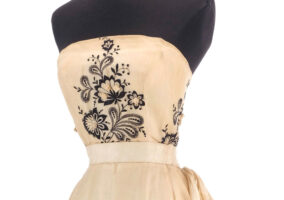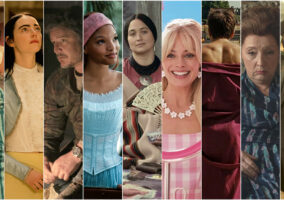![]() Pin
Pin
In a time when the almost military-like Marvel movie style is the dominant one for comic book adaptations and an actor in a Joker costume can pick up an Oscar if the film leans hard into white male grievance issues, director Tim Burton’s darkly fantastical, lightly goth takes on the most popular superhero of them all, 1989’s Batman and 1992’s Batman Returns, can seem quaint in comparison, but both films pretty much defined the entire Batman cinematic aesthetic for decades. In the years since, Oscar-winning prestige adaptations of the characters of Gotham City have tended to overshadow the work of those earlier adaptations (not much Jack Nicholson to be found in either Heath Ledger or Joaquin Phoenix’s Joker portrayals), but Michelle Pfeiffer’s unnerving portrayal of Selina Kyle seems to have only grown in stature. It’s a genre that typically hasn’t given women many opportunities to really tear loose, which may be partly why Pfeiffer’s sexy, scary, unraveling performance has stood the test of time.
![]() Pin
Pin
The “feline female” persona is a never-dying archetype of genre pieces that deal with the imaginary, from Sheena, Queen of the Jungle to Cat People, there has been a persistent trope that combines female sexuality and empowerment (which are often conflated or confused for the same thing in fiction) with feline attributes and behavior going back a century in popular entertainment. And the character of Catwoman, first introduced in 1940, stands at the top of that list as its most prominent iteration. When you look at film adaptations of superhero comic books, only two female characters can boast the multiple portrayals and interpretations of the “big boys” like Superman, Batman and Spider-Man. Lois Lane is one, and the other one – the only one with a codename, costume, and the kind of thematic consistency and symbolism that characterizes all the best superhero genre adaptations – is Catwoman, of course. And what’s interesting about her various portrayals is how so many of them – Julie Newmar, Eartha Kitt, Michelle Pfeiffer and Halle Berry – are iconic in their own way, with broad cultural spread.
![]() Pin
Pin
We’ve said in other entries in this series that an iconic film look can be considered as such when it becomes a consistently popular choice of Halloween costume or cosplay. The Newmar, Kitt, Pfeiffer and Berry versions of Catwoman are all represented in Halloween, cosplay and drag traditions, over and over again. She’s also a character so broad, and with such high potential to examine certain societal expectations of womanhood, that once a generation, a black actress takes over the role to potentially turn the conversation in a slightly different direction. Zoe Kravitz will be wearing the cat ears and wielding the whip in the upcoming The Batman opposite Robert Pattinson. That’s not a quality or track record any of the other iconic onscreen comic book characters have managed (six legendary screen portrayals – if you count Anne Hathaway – half of them by black actresses).
![]() Pin
Pin
What we’re trying to say here is that the role of Catwoman is like the Lady MacBeth of comicbookdom. When an actress gets a chance to play her and really sink her teeth into the role, she can wind up becoming a legend and having her portrayal endlessly examined, enshrined, and duplicated for decades, with her portrayal often seen as standing for something much larger than merely a lady in a cat costume.
![]() Pin
Pin
And in almost every instance, the character is used to comment on female sexuality, gender expectations and beauty as a weapon. Part of this comes down to a cultural tendency to see feline behavior as feminine in nature (and canine behavior as masculine), and part of this comes down to the idea that in order to make a person look more catlike through costume design, you have to highlight their eyes, their lips, their nails, and the sleekness of their body (which is partially why the characters in the stage and screen versions of the musical Cats can often look so unnerving). You give a leading lady a whip, a smokey eye, a skin-tight suit and a pair of heels onscreen, that’s automatically going to read like traditionally female sexual tropes.
![]() Pin
Pin
![]() Pin
Pin
![]() Pin
Pin
Batman Returns costume designer Mary Vogt took the subtext of the Julie Newmar costume and made it fully text, by sweeping away the cutesy sex-kitten undertones and leaning all the way into the idea that Catwoman, to some, is a figure that represents a sexual fetish. Clad completely in latex and literally washed down in silicon to make it gleam on film, Vogt’s Catwoman suit borrowed liberally from fetishwear designs to turn the character into something harder, darker, and more likely to unearth hidden feelings than Newmar’s more television-appropriate catsuit (which was nonetheless pretty damn racy for 1960s TV).
![]() Pin
Pin
![]() Pin
Pin
![]() Pin
Pin
Pfeiffer’s Selina Kyle is a constant threat to Batman, not necessarily because she can best him in combat, but because she makes him so uncomfortable that it throws him off his game. In order to accomplish that effect, her suit needed to be blatant about what it was doing. It’s not a sex-kitten costume that coyly asks “Is this what you want?” It’s a fetish suit that says “Don’t bullshit me. This is what you really want.”
Selina spends the entire film destroying symbols of coy femininity, as seen in her transformation scene:
![]() Pin
Pin
![]() Pin
Pin
Later, she beheads a bunch of female mannequins and berates a female mugging victim for being weak and waiting for a man to save her. When she’s not smashing and tearing apart the traditionally feminine and stereotypically girly parts of herself, she’s constantly berating men for being weak fools only interested in one thing. The hardness of her look and the darkness of her sexual expression are meant to underscore her new world view: women are weak and men are disgusting – exactly the kind of thing a dominatrix would say during a session.
![]() Pin
Pin
But Pfeiffer and Burton were wise to not make sex the whole point of the character. The reason there’s nuance enough to make her iconically memorable is because Pfeiffer has had the distinction of seeing her name become synonymous with female beauty and because Burton is a master at visual metaphor. First Pfeiffer, who really deserves credit for what she did here:
![]() Pin
Pin
She did something in her performance that can’t be accomplished with makeup or costume design: she made the face largely considered to be among the most beautiful in Hollywood history into something deeply, unnervingly frightening:
![]() Pin
Pin
![]() Pin
Pin
![]() Pin
Pin
No other portrayal of Catwoman emphasized the idea that she’s actually scary as hell and dangerously unstable. Pfeiffer and Burton made sure to put the sexual undertones of the character on full display, while turning her portrayal into an examination of mental health and the nearly literal unraveling of a psyche going through highly traumatic events. We say “nearly literal” in reference to Burton’s contribution. As we said, he’s got a brilliant sense of visual metaphor, which is why he asked for the costume design to have visible stitching all over it. This is, of course, very much in the Corpse Bride/Beetlejuice/Edward Scissorhand aesthetic for which he’s most well known, giving Catwoman’s look the feel of a patchwork monster pieced together from body parts.
![]() Pin
Pin
![]() Pin
Pin
![]() Pin
Pin
![]() Pin
Pin
But the stitching also served as a visual representation of Selina’s slowly unraveling mental state as the film progresses and her costume sustains more and more damage:
![]() Pin
Pin
![]() Pin
Pin
![]() Pin
Pin
This gives the impression (along with the script and Pfeiffer’s performance), that becoming Catwoman, while empowering in a lot of ways, has broken her, if not literally killed her. She is sporting an autopsy incision, after all. Underneath the sexual confidence and the “Hear me roar” bravado is a portrayal of a woman coming apart at the seams.
![]() Pin
Pin
It’s not triumphant. It’s tragic, in the mode of all great Frankenstein’s monster stories. In the final scene in the film, Selina Kyle practically bursts out of the seams of the Catwoman persona to make a final stand against the man who ruined her life:
![]() Pin
Pin
![]() Pin
Pin
![]() Pin
Pin
![]() Pin
Pin
![]() Pin
Pin
Her entire character arc, history, and her very psyche are represented by her costume design and how it’s utilized to support the script and the acting. That alone makes it worthy to be considered iconic. No tea no shade against Newmar, Kitt, Berry or Hathaway, but the reason this performance of Catwoman stands above all others is because the script, design, performance and direction all worked together to produce a scary, sexy, tragic monster story using one of the oldest and most portrayed femme fatale characters in comic book history. Every Halloween and Comic-Con proves the point that a whole bunch of people can put on the cat ears and make an effectively sexy Catwoman, but Pfeiffer, Burton and Vogt worked together to produce a version of her that’s downright legendary.
[Stills via Tom and Lorenzo]
The Great Gladys Bentley, King of Harlem Next Post:
“Men in Kilts: A Roadtrip with Sam and Graham” with Sam Heughan and Graham McTavish on Starz
-
 Pin
Pin
Audrey Hepburn’s Iconic SABRINA Gown Designed by Givenchy to Be Auctioned
-
 Pin
Pin
The Environmental Media Association (EMA) Awards 2024 Gala Red Carpet Rundown
-
 Pin
Pin
The 26th CDGA (Costume Designers Guild Awards) Nominees Announced!
Please review our Community Guidelines before posting a comment. Thank you!
